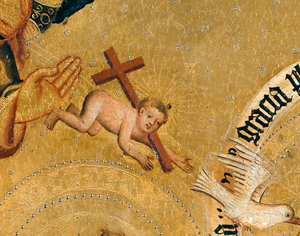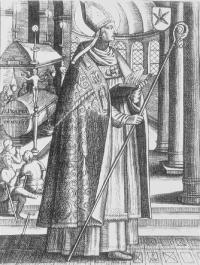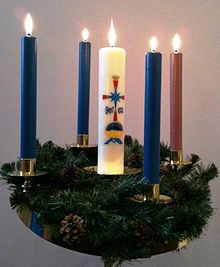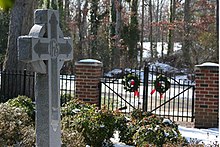A blanket of snow covers the little town of Bethlehem, in Pieter Bruegel’s oil painting from 1566. Although Jesus’ birth is celebrated every year on December 25, Luke and the other gospel writers offer no hint about the specific time of year he was born. Photo: Scala/Art Resource, NY.
The Bible offers few clues: Celebrations of Jesus’ Nativity are not mentioned in the Gospels or Acts; the date is not given, not even the time of year. The biblical reference to shepherds tending their flocks at night when they hear the news of Jesus’ birth (Luke 2:8) might suggest the spring lambing season; in the cold month of December, on the other hand, sheep might well have been corralled. Yet most scholars would urge caution about extracting such a precise but incidental detail from a narrative whose focus is theological rather than calendrical.
The extrabiblical evidence from the first and second century is equally spare: There is no mention of birth celebrations in the writings of early Christian writers such as Irenaeus (c. 130–200) or Tertullian (c. 160–225). Origen of Alexandria (c. 165–264) goes so far as to mock Roman celebrations of birth anniversaries, dismissing them as “pagan” practices—a strong indication that Jesus’ birth was not marked with similar festivities at that place and time.1 As far as we can tell, Christmas was not celebrated at all at this point.
This stands in sharp contrast to the very early traditions surrounding Jesus’ last days. Each of the Four Gospels provides detailed information about the time of Jesus’ death. According to John, Jesus is crucified just as the Passover lambs are being sacrificed. This would have occurred on the 14th of the Hebrew month of Nisan, just before the Jewish holiday began at sundown (considered the beginning of the 15th day because in the Hebrew calendar, days begin at sundown). In Matthew, Mark and Luke, however, the Last Supper is held after sundown, on the beginning of the 15th. Jesus is crucified the next morning—still, the 15th.a
Easter, a much earlier development than Christmas, was simply the gradual Christian reinterpretation of Passover in terms of Jesus’ Passion. Its observance could even be implied in the New Testament (1 Corinthians 5:7–8: “Our paschal lamb, Christ, has been sacrificed. Therefore let us celebrate the festival…”); it was certainly a distinctively Christian feast by the mid-second century C.E., when the apocryphal text known as the Epistle to the Apostles has Jesus instruct his disciples to “make commemoration of [his] death, that is, the Passover.”
Jesus’ ministry, miracles, Passion and Resurrection were often of most interest to first- and early-second-century C.E. Christian writers. But over time, Jesus’ origins would become of increasing concern. We can begin to see this shift already in the New Testament. The earliest writings—Paul and Mark—make no mention of Jesus’ birth. The Gospels of Matthew and Luke provide well-known but quite different accounts of the event—although neither specifies a date. In the second century C.E., further details of Jesus’ birth and childhood are related in apocryphal writings such as the Infancy Gospel of Thomas and the Proto-Gospel of James.b These texts provide everything from the names of Jesus’ grandparents to the details of his education—but not the date of his birth.
Finally, in about 200 C.E., a Christian teacher in Egypt makes reference to the date Jesus was born. According to Clement of Alexandria, several different days had been proposed by various Christian groups. Surprising as it may seem, Clement doesn’t mention December 25 at all. Clement writes: “There are those who have determined not only the year of our Lord’s birth, but also the day; and they say that it took place in the 28th year of Augustus, and in the 25th day of [the Egyptian month] Pachon [May 20 in our calendar] … And treating of His Passion, with very great accuracy, some say that it took place in the 16th year of Tiberius, on the 25th of Phamenoth [March 21]; and others on the 25th of Pharmuthi [April 21] and others say that on the 19th of Pharmuthi [April 15] the Savior suffered. Further, others say that He was born on the 24th or 25th of Pharmuthi [April 20 or 21].”2
Clearly there was great uncertainty, but also a considerable amount of interest, in dating Jesus’ birth in the late second century. By the fourth century, however, we find references to two dates that were widely recognized—and now also celebrated—as Jesus’ birthday: December 25 in the western Roman Empire and January 6 in the East (especially in Egypt and Asia Minor). The modern Armenian church continues to celebrate Christmas on January 6; for most Christians, however, December 25 would prevail, while January 6 eventually came to be known as the Feast of the Epiphany, commemorating the arrival of the magi in Bethlehem. The period between became the holiday season later known as the 12 days of Christmas.
The earliest mention of December 25 as Jesus’ birthday comes from a mid-fourth-century Roman almanac that lists the death dates of various Christian bishops and martyrs. The first date listed, December 25, is marked: natus Christus in Betleem Judeae: “Christ was born in Bethlehem of Judea.”3 In about 400 C.E., Augustine of Hippo mentions a local dissident Christian group, the Donatists, who apparently kept Christmas festivals on December 25, but refused to celebrate the Epiphany on January 6, regarding it as an innovation. Since the Donatist group only emerged during the persecution under Diocletian in 312 C.E. and then remained stubbornly attached to the practices of that moment in time, they seem to represent an older North African Christian tradition.
In the East, January 6 was at first not associated with the magi alone, but with the Christmas story as a whole.
So, almost 300 years after Jesus was born, we finally find people observing his birth in mid-winter. But how had they settled on the dates December 25 and January 6?
There are two theories today: one extremely popular, the other less often heard outside scholarly circles (though far more ancient).4
The most loudly touted theory about the origins of the Christmas date(s) is that it was borrowed from pagan celebrations. The Romans had their mid-winter Saturnalia festival in late December; barbarian peoples of northern and western Europe kept holidays at similar times. To top it off, in 274 C.E., the Roman emperor Aurelian established a feast of the birth of Sol Invictus (the Unconquered Sun), on December 25. Christmas, the argument goes, is really a spin-off from these pagan solar festivals. According to this theory, early Christians deliberately chose these dates to encourage the spread of Christmas and Christianity throughout the Roman world: If Christmas looked like a pagan holiday, more pagans would be open to both the holiday and the God whose birth it celebrated.
Despite its popularity today, this theory of Christmas’s origins has its problems. It is not found in any ancient Christian writings, for one thing. Christian authors of the time do note a connection between the solstice and Jesus’ birth: The church father Ambrose (c. 339–397), for example, described Christ as the true sun, who outshone the fallen gods of the old order. But early Christian writers never hint at any recent calendrical engineering; they clearly don’t think the date was chosen by the church. Rather they see the coincidence as a providential sign, as natural proof that God had selected Jesus over the false pagan gods.
It’s not until the 12th century that we find the first suggestion that Jesus’ birth celebration was deliberately set at the time of pagan feasts. A marginal note on a manuscript of the writings of the Syriac biblical commentator Dionysius bar-Salibi states that in ancient times the Christmas holiday was actually shifted from January 6 to December 25 so that it fell on the same date as the pagan Sol Invictus holiday.5 In the 18th and 19th centuries, Bible scholars spurred on by the new study of comparative religions latched on to this idea.6 They claimed that because the early Christians didn’t know when Jesus was born, they simply assimilated the pagan solstice festival for their own purposes, claiming it as the time of the Messiah’s birth and celebrating it accordingly.
More recent studies have shown that many of the holiday’s modern trappings do reflect pagan customs borrowed much later, as Christianity expanded into northern and western Europe. The Christmas tree, for example, has been linked with late medieval druidic practices. This has only encouraged modern audiences to assume that the date, too, must be pagan.
There are problems with this popular theory, however, as many scholars recognize. Most significantly, the first mention of a date for Christmas (c. 200) and the earliest celebrations that we know about (c. 250–300) come in a period when Christians were not borrowing heavily from pagan traditions of such an obvious character.
Granted, Christian belief and practice were not formed in isolation. Many early elements of Christian worship—including eucharistic meals, meals honoring martyrs and much early Christian funerary art—would have been quite comprehensible to pagan observers. Yet, in the first few centuries C.E., the persecuted Christian minority was greatly concerned with distancing itself from the larger, public pagan religious observances, such as sacrifices, games and holidays. This was still true as late as the violent persecutions of the Christians conducted by the Roman emperor Diocletian between 303 and 312 C.E.
This would change only after Constantine converted to Christianity. From the mid-fourth century on, we do find Christians deliberately adapting and Christianizing pagan festivals. A famous proponent of this practice was Pope Gregory the Great, who, in a letter written in 601 C.E. to a Christian missionary in Britain, recommended that local pagan temples not be destroyed but be converted into churches, and that pagan festivals be celebrated as feasts of Christian martyrs. At this late point, Christmas may well have acquired some pagan trappings. But we don’t have evidence of Christians adopting pagan festivals in the third century, at which point dates for Christmas were established. Thus, it seems unlikely that the date was simply selected to correspond with pagan solar festivals.
The December 25 feast seems to have existed before 312—before Constantine and his conversion, at least. As we have seen, the Donatist Christians in North Africa seem to have known it from before that time. Furthermore, in the mid- to late fourth century, church leaders in the eastern Empire concerned themselves not with introducing a celebration of Jesus’ birthday, but with the addition of the December date to their traditional celebration on January 6.7
There is another way to account for the origins of Christmas on December 25: Strange as it may seem, the key to dating Jesus’ birth may lie in the dating of Jesus’ death at Passover. This view was first suggested to the modern world by French scholar Louis Duchesne in the early 20th century and fully developed by American Thomas Talley in more recent years.8 But they were certainly not the first to note a connection between the traditional date of Jesus’ death and his birth.
The baby Jesus flies down from heaven on the back of a cross, in this detail from Master Bertram’s 14th-century Annunciation scene. Jesus’ conception carried with it the promise of salvation through his death. It may be no coincidence, then, that the early church celebrated Jesus’ conception and death on the same calendar day: March 25, exactly nine months before December 25. Kunsthalle, Hamburg/Bridgeman Art Library, NY
Around 200 C.E. Tertullian of Carthage reported the calculation that the 14th of Nisan (the day of the crucifixion according to the Gospel of John) in the year Jesus diedc was equivalent to March 25 in the Roman (solar) calendar.9 March 25 is, of course, nine months before December 25; it was later recognized as the Feast of the Annunciation—the commemoration of Jesus’ conception.10 Thus, Jesus was believed to have been conceived and crucified on the same day of the year. Exactly nine months later, Jesus was born, on December 25.d
This idea appears in an anonymous Christian treatise titled On Solstices and Equinoxes, which appears to come from fourth-century North Africa. The treatise states: “Therefore our Lord was conceived on the eighth of the kalends of April in the month of March [March 25], which is the day of the passion of the Lord and of his conception. For on that day he was conceived on the same he suffered.”11 Based on this, the treatise dates Jesus’ birth to the winter solstice.
Augustine, too, was familiar with this association. In On the Trinity (c. 399–419) he writes: “For he [Jesus] is believed to have been conceived on the 25th of March, upon which day also he suffered; so the womb of the Virgin, in which he was conceived, where no one of mortals was begotten, corresponds to the new grave in which he was buried, wherein was never man laid, neither before him nor since. But he was born, according to tradition, upon December the 25th.”12
In the East, too, the dates of Jesus’ conception and death were linked. But instead of working from the 14th of Nisan in the Hebrew calendar, the easterners used the 14th of the first spring month (Artemisios) in their local Greek calendar—April 6 to us. April 6 is, of course, exactly nine months before January 6—the eastern date for Christmas. In the East, too, we have evidence that April was associated with Jesus’ conception and crucifixion. Bishop Epiphanius of Salamis writes that on April 6, “The lamb was shut up in the spotless womb of the holy virgin, he who took away and takes away in perpetual sacrifice the sins of the world.”13 Even today, the Armenian Church celebrates the Annunciation in early April (on the 7th, not the 6th) and Christmas on January 6.e
Thus, we have Christians in two parts of the world calculating Jesus’ birth on the basis that his death and conception took place on the same day (March 25 or April 6) and coming up with two close but different results (December 25 and January 6).
Connecting Jesus’ conception and death in this way will certainly seem odd to modern readers, but it reflects ancient and medieval understandings of the whole of salvation being bound up together. One of the most poignant expressions of this belief is found in Christian art. In numerous paintings of the angel’s Annunciation to Mary—the moment of Jesus’ conception—the baby Jesus is shown gliding down from heaven on or with a small cross (see photo above of detail from Master Bertram’s Annunciation scene); a visual reminder that the conception brings the promise of salvation through Jesus’ death.
The notion that creation and redemption should occur at the same time of year is also reflected in ancient Jewish tradition, recorded in the Talmud. The Babylonian Talmud preserves a dispute between two early-second-century C.E. rabbis who share this view, but disagree on the date: Rabbi Eliezer states: “In Nisan the world was created; in Nisan the Patriarchs were born; on Passover Isaac was born … and in Nisan they [our ancestors] will be redeemed in time to come.” (The other rabbi, Joshua, dates these same events to the following month, Tishri.)14 Thus, the dates of Christmas and Epiphany may well have resulted from Christian theological reflection on such chronologies: Jesus would have been conceived on the same date he died, and born nine months later.15
In the end we are left with a question: How did December 25 become Christmas? We cannot be entirely sure. Elements of the festival that developed from the fourth century until modern times may well derive from pagan traditions. Yet the actual date might really derive more from Judaism—from Jesus’ death at Passover, and from the rabbinic notion that great things might be expected, again and again, at the same time of the year—than from paganism. Then again, in this notion of cycles and the return of God’s redemption, we may perhaps also be touching upon something that the pagan Romans who celebrated Sol Invictus, and many other peoples since, would have understood and claimed for their own, too.16
“How December 25 Became Christmas” by Andrew McGowan originally appeared in Bible Review, December 2002. The article was first republished in Bible History Daily in December 2012.
Notes:
a. See Jonathan Klawans, “Was Jesus’ Last Supper a Seder?” Bible Review, October 2001.
b. See the following Bible Review articles: David R. Cartlidge, “The Christian Apocrypha: Preserved in Art,” Bible Review, June 1997; Ronald F. Hock and David R. Cartlidge, “The Favored One,” Bible Review, June 2001; and Charles W. Hedrick, “The 34 Gospels,” Bible Review, June 2002.
c. For more on dating the year of Jesus’ birth, see Leonora Neville, “Origins: Fixing the Millennium,” Archaeology Odyssey, January/February 2000.
d. The ancients were familiar with the 9-month gestation period based on the observance of women’s menstrual cycles, pregnancies and miscarriages.
e. In the West (and eventually everywhere), the Easter celebration was later shifted from the actual day to the following Sunday. The insistence of the eastern Christians in keeping Easter on the actual 14th day caused a major debate within the church, with the easterners sometimes referred to as the Quartodecimans, or “Fourteenthers.”
1. Origen, Homily on Leviticus 8.
2. Clement, Stromateis 1.21.145. In addition, Christians in Clement’s native Egypt seem to have known a commemoration of Jesus’ baptism—sometimes understood as the moment of his divine choice, and hence as an alternate “incarnation” story—on the same date (Stromateis 1.21.146). See further on this point Thomas J. Talley, Origins of the Liturgical Year, 2nd ed. (Collegeville, MN: Liturgical Press, 1991), pp. 118–120, drawing on Roland H. Bainton, “Basilidian Chronology and New Testament Interpretation,” Journal of Biblical Literature 42 (1923), pp. 81–134; and now especially Gabriele Winkler, “The Appearance of the Light at the Baptism of Jesus and the Origins of the Feast of the Epiphany,” in Maxwell Johnson, ed., Between Memory and Hope: Readings on the Liturgical Year (Collegeville, MN: Liturgical Press, 2000), pp. 291–347.
3. The Philocalian Calendar.
4. Scholars of liturgical history in the English-speaking world are particularly skeptical of the “solstice” connection; see Susan K. Roll, “The Origins of Christmas: The State of the Question,” in Between Memory and Hope: Readings on the Liturgical Year (Collegeville, MN: Liturgical Press, 2000), pp. 273–290, especially pp. 289–290.
5. A gloss on a manuscript of Dionysius Bar Salibi, d. 1171; see Talley, Origins, pp. 101–102.
6. Prominent among these was Paul Ernst Jablonski; on the history of scholarship, see especially Roll, “The Origins of Christmas,” pp. 277–283.
7. For example, Gregory of Nazianzen, Oratio 38; John Chrysostom, In Diem Natalem.
8. Louis Duchesne, Origines du culte Chrétien, 5th ed. (Paris: Thorin et Fontemoing, 1925), pp. 275–279; and Talley, Origins.
9. Tertullian, Adversus Iudaeos 8.
10. There are other relevant texts for this element of argument, including Hippolytus and the (pseudo-Cyprianic) De pascha computus; see Talley, Origins, pp. 86, 90–91.
11. De solstitia et aequinoctia conceptionis et nativitatis domini nostri iesu christi et iohannis baptistae.
12. Augustine, Sermon 202.
13. Epiphanius is quoted in Talley, Origins, p. 98.
14. b. Rosh Hashanah 10b–11a.
15. Talley, Origins, pp. 81–82.
16. On the two theories as false alternatives, see Roll, “Origins of Christmas.”


























